Search Results
Fine Jewelry University Articles matching: “CH14K MEANING”
Showing only FJU Article results. Click here to show all results.
Fine Jewelry University (Show All FJU Articles)
-
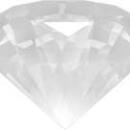
Fake Diamonds: The Great Diamond Attack
….25, excellent toughness, refractive index of 2.65, dispersion of 0.0104, and a specific gravity of 3.21. More creative uses of this man made gem are in the pipeline. The Big Bad Synthetic In the gem world we use words with particular meanings. Synthetic is one of those words. Synthetic, in the gem world, means made of the same chemicals (elements) and crystal design as nature but is man made. So, a synthetic diamond is the same chemistry (carbon element) and crystal …
-
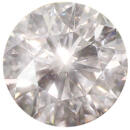
Diamond Buying Guide: The 4 C’s
… are too shallow or too deep allow light to escape resulting in loss of brilliance. Color Judging diamond color is actually looking for the absence of color or transparency (except fancy color). The color grading scale starts with D meaning totally colorless and moves down the alphabet subtly increasing in body color. As you can see from the picture, the difference between one or two color grades is quite small, but the price difference can be significant. When deciding on…
-
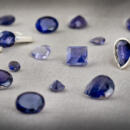
Gem in the Spotlight: Iolite
…, but iolite has a rich, unique color and great gem value on its side. It is more subtlety nuanced than amethyst and deeper than many tanzanites. Iolite’s name comes from its violet color. It is from the Greek word “ios” meaning violet. Unlike many other popular gems, iolite cannot be heat treated to enhance its color. The color you see is the natural color of the stone when it was first discovered. This adds value to many gem buyers who don’t want a treated gemstone. …
-
The Birthstones
…thoughts. Learn more about Amethyst March’s Birthstone: Aquamarine Originating its name from the Latin “aqua marina” meaning “sea water”, the aquamarine is a light blue to greenish blue beryl, most valuable when it’s a shade of darker blue. … has been treasured for over 4,000 years. The name for the emerald is derived from the Greek word “smaragdos”, meaning green stone. Spring and green symbolized faith and fertility. The early Christians valued the emerald as a symbol of …
-
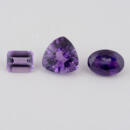
Gem in the Spotlight: Amethyst
… polish luster and its specific gravity is 2.66. Its chemical composition is SiO2. History and Lore The rich history of amethyst dates all the way back to ancient Greek mythology. The word “amethystos,” is derived from the Greek word meaning “not drunken.” It is said that amethyst was created when Dionysus, the god of wine, was angered by an insult from a mortal. In his rage, Dionysus vowed to take revenge on the next person who crossed his path, and he created fierce …
-
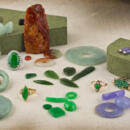
Gem in the Spotlight: Jade
… primary components, but the other elements are what make them special. The arrangement of these atoms in its crystal structure is what gives jade its extraordinary toughness. At this point, it’s important to discuss the technical meaning of “toughness”. Toughness is a material’s resistance to fracturing, whereas hardness is its resistance to scratching. This may seem like splitting hairs, but it actually has a big impact on how gems are worn and what they can handle. We …
-
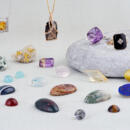
Gem in the Spotlight: Quartz
… luster and its specific gravity is 2.66 (may vary based on inclusions). In addition to its beauty, quartz is also an extremely useful stone due to its unique physical attributes. For example, quartz exhibits piezoelectric properties, meaning it can generate an electrical charge under mechanical stress. And likewise, when induced with an electrical charge, the crystal will vibrate at a very precise interval of exactly 32,768 vibrations/second or ~32kHz. This property is …
-
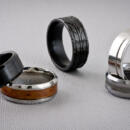
Alternative Metals for Men’s Jewelry
… due to its hardness which can be a safety feature which we will discuss later. It is hypoallergenic, so people with allergies to other jewelry metals can usually wear tungsten jewelry without issue. Tungsten comes from a Swedish term meaning “heavy stone.” It is element 74 on the periodic table with the chemical symbol “W”. The “W” comes from its earlier name, wolfram. Tungsten has a high melting point at an astounding 6,191 degrees Fahrenheit. Tungsten is rated at about …